Can you freeze cooked salmon? The answer is yes! Freezing cooked salmon is a great way to keep it fresh for longer and enjoy your favorite dishes anytime. Not only can you freeze cooked salmon, but it’s also an easy process that doesn’t require special tools or ingredients. You can safely store your cooked salmon for up to three months with just a few simple steps.
In this article, we will discuss the best methods for freezing cooked salmon, how to reheat it, and some helpful tips and tricks for making sure your fish stays as fresh as possible while in the freezer. So if you’re looking for ways to preserve your delicious cooked salmon dishes, read on!
Can You Freeze Cooked Salmon?
Cooked salmon can be frozen, whether as a whole fillet or leftovers. Raw or cooked salmon freezes well, but it’s important to wrap it tightly to avoid the potent smell affecting other items in the freezer. Cooked salmon can be kept in the fridge for 2-3 days if tightly wrapped, but freezing it will extend its lifespan to six months.
Thawing cooked salmon should be done slowly in the fridge to avoid drying out. If defrosting in the microwave, use the designated defrost setting and heat it slowly. Cooked salmon should only be frozen once to preserve flavor and avoid drying out. When reheating cooked salmon, wrap it in foil with a splash of water and heat it in a hot oven for best results. Although reheating salmon may not taste as good as freshly cooked fish, it can still be used in other dishes such as paté, soup, or salad.
What Is The Ideal Temperature To Freeze Cooked Salmon?
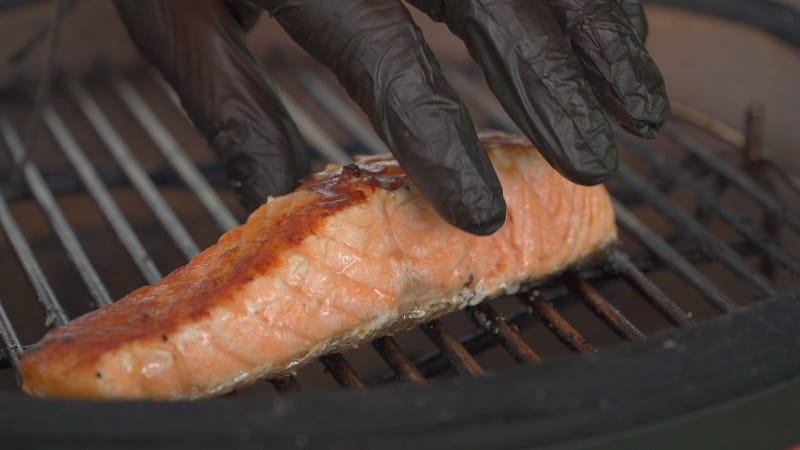
When it comes to freezing cooked salmon, it is important to be aware of the ideal temperature to ensure the best results. Experts say the ideal temperature to freeze cooked salmon is at or below 0°F (-18°C). At this temperature, the texture and flavor of the fish can be preserved for up to four to six months.
It is also important to ensure that the cooked salmon has cooled completely before freezing it to prevent the formation of moisture. Additionally, when freezing cooked salmon, it is recommended to wrap each piece individually in food-grade parchment paper to prevent the fish from sticking to the bag or container. By following these guidelines, individuals can enjoy deliciously cooked salmon for months.
Read more:
What Are The Benefits Of Freezing Cooked Salmon?
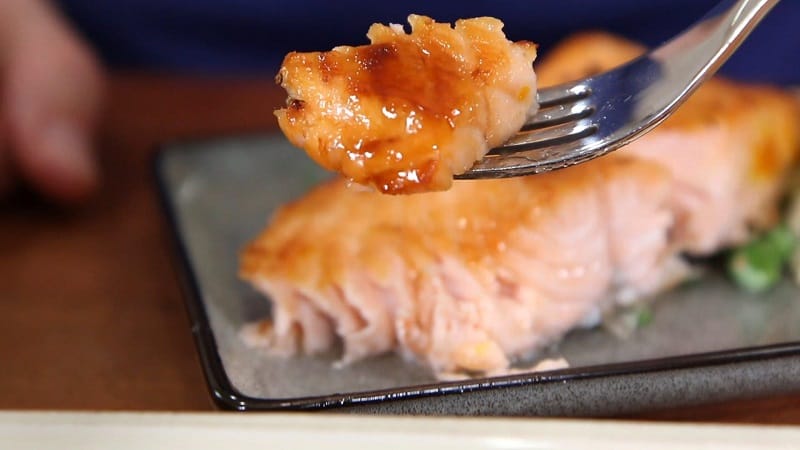
I recently discovered the benefits of freezing cooked salmon, and it has been a game-changer in my meal prep routine. Freezing cooked salmon has several benefits that make it a practical solution for individuals who want to extend the shelf life of this nutritious fish.
One of the main benefits of freezing cooked salmon is that it extends the shelf life of the fish. Instead of worrying about using up all of the salmon within a few days, I can freeze it and have it on hand for weeks or months. This means that I can buy salmon in bulk and not have to worry about it going bad before I have a chance to use it all.
Another benefit is that freezing cooked salmon locks in the nutrients and flavor of the fish. When you freeze cooked salmon, you are essentially preserving the fish at its peak freshness. This means that when you thaw it and reheat it, it will taste just as good as when you first cooked it. Plus, you won’t have to worry about the fish drying out or losing its flavor during freezing.
Freezing cooked salmon is also a great way to save money. By buying salmon in bulk and freezing it, you can take advantage of sales and discounts at the grocery store. Plus, you won’t have to worry about wasting any fish you don’t use immediately.
But perhaps the biggest benefit of freezing cooked salmon is the convenience factor. Pre-cooked salmon in your freezer means you can easily add it to salads and pasta dishes or even eat it as a quick snack. It saves you time in the kitchen and gives you a healthy and delicious protein source whenever you need it.
Can You Freeze Salmon Fillets, Or Do They Need To Be Portioned Out?
Salmon is a type of fish that can be stored in the freezer. When freezing salmon fillets, it is important to wrap them in cling film before placing them in a freezer bag. It is recommended to freeze each fillet individually to make portioning easier. S
Salmon can also be stored in the fridge for 2 to 3 days or until the use-by date on the packaging. To prevent spoilage, throwing out frozen salmon fillets should be done slowly in the refrigerator. Refreezing salmon should be avoided to prevent any possibility of food poisoning.
How to Freeze Cooked Salmon?
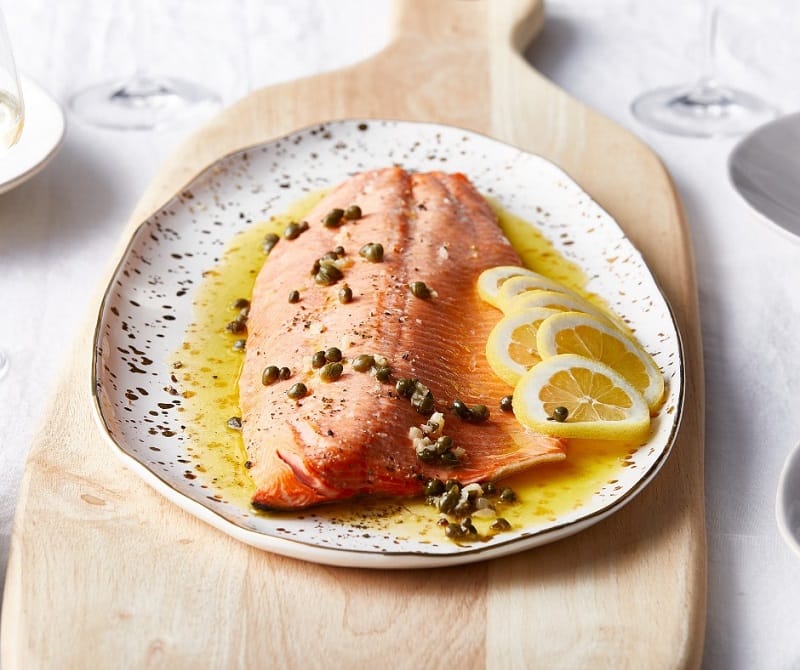
Freezing cooked salmon can be tricky, so I’ve put together this guide to help you do it right.
First off, it’s important to note that you should only freeze cooked salmon. Raw salmon does not freeze well and can result in a mushy texture when thawed. So, if you plan to freeze salmon, ensure it’s already cooked.
If you have a vacuum sealer, even better. Vacuum sealing removes all the air from the packaging, preventing freezer burn and prolonging the life of the salmon. If you don’t have a vacuum sealer, you can use a ziplock bag, but be sure to remove as much air as possible.
Label the packaging with the date of freezing so you know how long the salmon has been in the freezer. Salmon can last up to three months in the freezer, but it’s best to consume it within two months for optimal taste and texture.
When ready to use the frozen cooked salmon, thaw it in the refrigerator overnight. Avoid thawing it at room temperature, as this can lead to bacterial growth. Once thawed, use the salmon within two days.
I recommend thawing it completely and flaking it with a fork if you want to use the salmon for a salad. If you’re using it for a stir-fry or pasta dish, add it directly to the pan from frozen and cook it until it’s heated through.
How Should Cooked Salmon Be Packaged For Freezing?
When it comes to freezing cooked salmon, there are important steps to take in order to ensure the best results.
- Firstly, it is important to cool the salmon completely before freezing it. Any residual heat can cause moisture to form in the package, which can impact the texture of the fish when it is thawed.
- It is also recommended to avoid adding any additional ingredients or sauces when freezing salmon, as the enzymes and acids present in these ingredients can affect the natural flavor of the fish.
- When packaging the salmon for freezing, it is recommended to wrap each piece individually in food-grade parchment paper to prevent the fish from sticking to the packaging.
- Once wrapped, the salmon can be placed in a freezer-safe bag or container labeled and dated correctly.
Taking these steps can ensure that cooked salmon remains delicious and of high quality when it is thawed and consumed after being frozen.
How Do You Properly Thaw Frozen Cooked Salmon?

Here are way when thawing frozen cooked salmon for you.
- Always Remove Frozen Salmon from Vacuum-Sealed Packaging Before Defrosting. Frozen salmon should never be left in vacuum-sealed packaging, as it poses the risk of botulism. Clostridium botulinum, a bacteria that causes the spores leading to botulism, thrives in low-oxygen environments like that formed in vacuum-sealed packaging. This could be dangerous for human health. Hence, transferring salmon to a resealable, leak-proof plastic bag is wise to prevent any harmful bacterial growth before thawing.
- Defrost in the Refrigerator Overnight, If Possible. If you have planned appropriately and have time, transfer the frozen salmon to the refrigerator the previous evening. It is the safest, most effective method and takes the longest. You need to cover the salmon, keep it in the fridge, and let it defrost gradually. Depending on the size of the salmon, this process may take about 12 to 24 hours, but there is no risk of bacterial growth.
- Thaw in Cold Water, If You Can Spare an Hour. If you’ve forgotten to transfer the salmon to the refrigerator for overnight defrosting, put the wrapped salmon in a leak-proof plastic bag and place it in a bowl of cold water for defrosting. Replace the water every 30 minutes to keep the temperature below 40°F, which is a risk for bacterial growth. Depending on the size of the salmon and the amount of ice, this process can take approximately an hour.
- Utilize the Microwave for Quick Defrosting, If Needed. While quick defrosting in a microwave may affect the texture of the cooked salmon and may lead to uneven defrosting, it is still a way to defrost the fish fast. You can use the defrost setting of the microwave to thaw the salmon. Make sure to pause the microwave every few minutes and rearrange the fish to prevent overcooking.
- Cook Frozen Salmon without Thawing. You can cook frozen salmon without defrosting it, provided you adjust the cooking time and temperature accordingly. If you’re baking thawed salmon fillets in the oven, cook frozen salmon for approximately 5-10 minutes longer than thawed salmon, and check for doneness using a thermometer. This method requires higher oven temperatures and increases the risk of exterior overcooking, so keep an eye on the cooking process.
When thawing frozen cooked salmon, it is always best to plan ahead and defrost salmon gradually to prevent bacterial growth. If you have less time, use cold water or microwave defrosting methods. In a hurry, frozen salmon can also be cooked without thawing, but be sure to adjust the cooking time and temperature accordingly to ensure safe consumption.
How To Reheat Cooked Salmon?
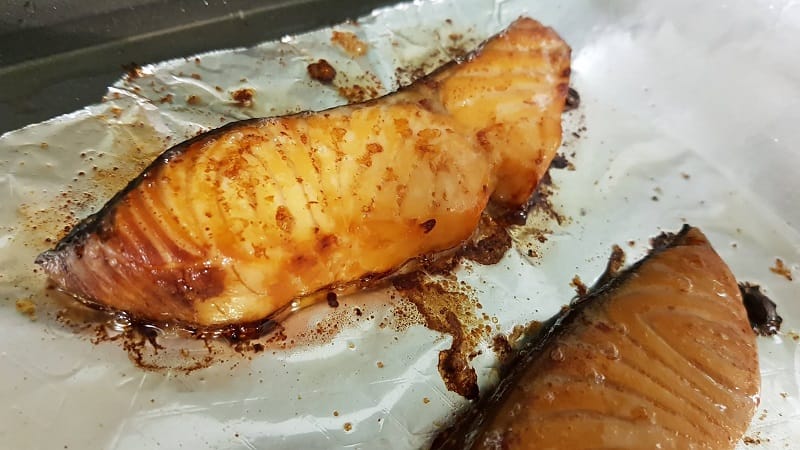
Reheating salmon can be tricky – if you don’t do it right, you’ll end up with dry, overcooked fish that’s no longer enjoyable. So, I’ve researched and experimented to figure out the best ways to reheat cooked salmon, and I’m here to share my findings.
Before we get into the methods, there are a few important things to keep in mind when reheating salmon. First, you want to make sure the salmon is properly stored in the fridge in an airtight container or wrapped tightly in foil. Second, you should only reheat salmon once – reheating it multiple times can increase the risk of foodborne illness. And finally, you want to be careful not to overcook the salmon, as it can become dry and tough.
Now, onto the methods. Here are three ways to reheat cooked salmon:
- Oven method: This is the best method if you want your salmon to have that crispy, just-cooked texture. Preheat your oven to 275°F. Place the salmon in an oven-safe dish, cover with foil, and heat for about 15 minutes. Check the salmon with a fork – if it flakes easily, it’s done. If not, continue heating for a few more minutes.
- Stovetop method: This method is quick and easy but won’t give you that crispy texture. Heat a nonstick skillet over medium heat. Add a small amount of oil or butter to the pan. Place the salmon in the pan, skin-side down if it still has skin on, and cover with a lid. Heat for about 3-4 minutes or until the salmon is heated through.
- Microwave method: This method is the quickest but most likely to result in overcooked, tough salmon. Place the salmon on a microwave-safe plate and cover with a damp paper towel. Microwave on high for 30-second increments until the salmon is heated, checking with a fork after each interval.
No matter which method you choose, let the salmon sit at room temperature for a few minutes before reheating, and don’t forget to season it with salt and pepper to taste. With these tips, you can enjoy your leftover salmon without worrying about ruining it in the reheating process.
How To Tell When Cooked Salmon Go Bad?
It’s not always easy to spot, but there are a few telltale signs that you can look for cooked salmon to go bad out.
- Firstly, pay attention to the smell. Cooked salmon should have a fresh, ocean-like scent. If it smells funky or has a strong, pungent odor, there’s a good chance it has gone bad. Trust your nose, and don’t take any chances.
- Next, check the texture. Cooked salmon should have a firm, flaky texture. If it’s slimy or mushy, that’s a sign that it has started to break down and is no longer safe to eat.
- Another thing to look for is discoloration. Fresh cooked salmon will have a pink or reddish color. If it has turned gray or brown, it’s likely gone bad and should be discarded.
- Lastly, consider how long the salmon has been sitting in the fridge. Even if it looks and smells okay, cooked salmon should not be kept for more than three days. After that, it’s best to err on caution and throw it out.
In conclusion, knowing when cooked salmon has gone bad is crucial for your health and safety. Remember to use your senses and pay attention to the signs of spoilage. When in doubt, always throw it out.
Common Mistakes When Storing Cooked Salmon In The Fridge
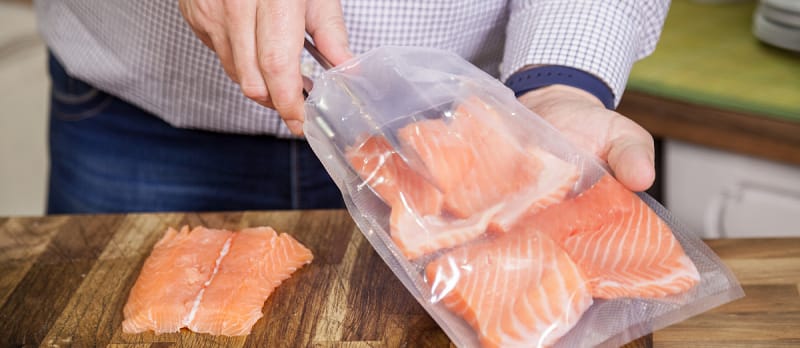
Here, I want to share with you some common mistakes people make when storing cooked salmon in the fridge and how to avoid them.
Mistake #1: Leaving the skin on
- One of the most common mistakes that people make when storing cooked salmon in the fridge is leaving the skin on. While it may seem convenient to leave the skin on, it can actually cause the salmon to spoil faster. The skin can trap moisture and bacteria, which can lead to spoilage.
- Solution: Always remove the skin before storing cooked salmon in the fridge. You can gently scrape the skin off a knife or spoon.
Mistake #2: Not storing it properly
- Another common mistake that people make is not storing cooked salmon properly. If you simply place the salmon in a container and put it in the fridge, it can quickly spoil. Cooked salmon needs to be stored in an airtight container to prevent bacteria from growing.
- Solution: Use an airtight container to store cooked salmon in the fridge. You can also wrap it tightly in plastic or aluminum foil before placing it in the container.
Mistake #3: Storing it for too long
- Cooked salmon can only last a few days in the fridge before it spoils. If you store it for too long, it can develop a sour smell and taste, which is a clear sign that it has gone bad.
- Solution: Always check the date that you cooked the salmon and store it for no longer than three days. If you’re not going to eat it within that time, you can freeze it.
Mistake #4: Not reheating it properly
- Lastly, one of the biggest mistakes people make when storing cooked salmon in the fridge is not reheating it properly. You can risk food poisoning if you don’t reheat it to the right temperature.
- Solution: When reheating cooked salmon, make sure that it reaches an internal temperature of at least 165°F. You can use a food thermometer to check the temperature.
Should You Season Or Add Sauce To Cooked Salmon Before Freezing?
There are differing opinions on whether seasoning or adding sauce to cooked salmon before freezing is a good idea. Some argue that adding seasoning or sauce can change the flavor of the salmon and make it less desirable when reheated. Others argue that adding flavor can enhance the taste and prevent the salmon from becoming too dry when reheated. Ultimately, the decision to season or add sauce to cooked salmon before freezing is a personal preference.
It is advisable to freeze salmon prepared without sauces or seasoning to ensure the best quality when reheated. If you do choose to add seasoning or sauce, it is best to do so sparingly and only add ingredients that will complement the natural flavors of the salmon. Additionally, it is important to wrap the salmon tightly in parchment paper before placing it in freezer bags to prevent flavors from combining and to ensure the salmon retains its moisture.
How Does Freezing Cooked Salmon Compare To Freezing Raw Salmon?
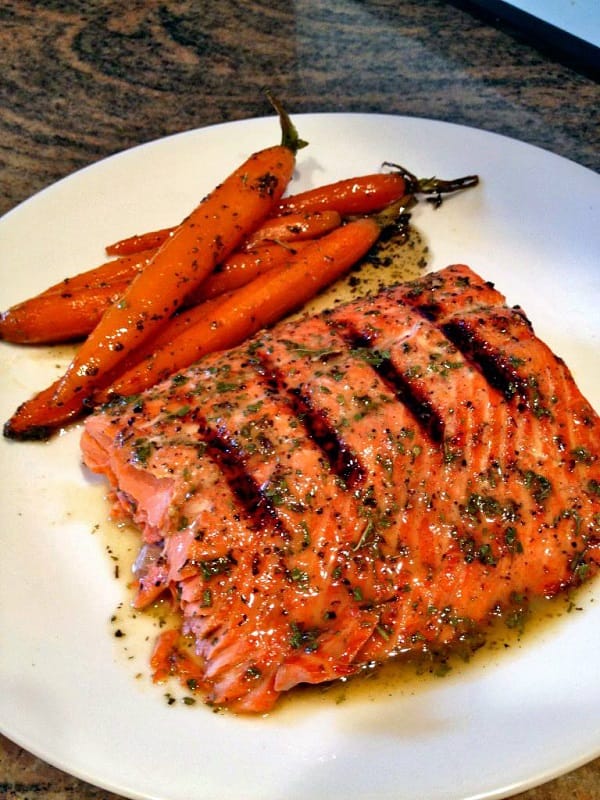
Cooked salmon can be safely frozen for up to three months, but it’s best to consume it sooner to maintain its flavors and oils. On the other hand, raw salmon can also be frozen without cooking and is equally nutritious as fresh salmon. Frozen salmon, whether cooked or raw, contains similar amounts of protein, healthy omega-3 fatty acids, and vitamins A and D as compared to fresh salmon.
Freezing does not significantly reduce the nutritional content of the fish, making it a healthy and convenient option for those who want to enjoy salmon all year round. Overall, cooked and raw salmon can be easily frozen and offer plenty of nutritional benefits.
FAQs About Can You Freeze Cooked Salmon
What Temperature Should Cooked Salmon Be Thawed At?
If cooking salmon from frozen, it is recommended to thaw it first, and for temperature safety reasons, it should be thawed in the refrigerator at a temperature of 40 degrees Fahrenheit or below. An instant-read thermometer should be used to accurately measure the temperature of cooked or thawed salmon, with the tip inserted into the fillet’s thickest part to check for doneness.
Does Freezing Affect The Texture Or Taste Of Cooked Salmon?
Freezing cooked salmon can affect its texture and taste, but proper handling can preserve its quality. When salmon is frozen, ice crystals form and can damage its protein structure, causing changes in texture. Freezing can also affect flavor, as the process can cause moisture and fat loss, resulting in drier and less flavorful fish. However, if the cooked salmon is frozen immediately after cooking and properly sealed, the effects of freezing can be minimized.
Portioning the salmon into smaller sizes and using vacuum sealers or parchment paper can help preserve its taste and texture. It is important not to refreeze cooked salmon, as this can further degrade its quality. In summary, freezing can affect the texture and taste of cooked salmon, but if handled properly, its quality can be maintained.
What Is The Best Way To Store Cooked Salmon?
The best way to store cooked salmon is to refrigerate it as soon as possible, ideally within two hours of cooking. To ensure the safety and quality of the fish, it should be stored in a shallow airtight container or wrapped tightly with heavy-duty aluminum foil or plastic wrap. In the refrigerator, properly stored, cooked salmon will last for 3 to 4 days. It can be frozen if you need to store it for longer than that. Store it in covered airtight containers or heavy-duty freezer bags, or wrap it tightly with aluminum foil or freezer wrap.
Cooked salmon can be maintained at its best quality for about 2 to 3 months in the freezer, and it will keep safe indefinitely at 0°F. It is important to keep in mind that bacteria grow rapidly at temperatures between 40°F and 140°F, so cooked salmon should not be left out at room temperature for more than 2 hours. The fish should be discarded if it has a sour smell, slimy texture, or an off appearance.
Is it OK To Eat 3-Day-Old Salmon?
When eating 3-day-old salmon, it’s important to know the facts before taking any chances. Raw salmon can be safe to eat after being in the fridge for three days, as long as it hasn’t reached the “danger zone” where bacteria multiply and cause illness. The danger zone starts at 35 degrees Fahrenheit and lasts for 24 hours. If your salmon has been in the fridge for more than 24 hours, it’s time to throw it out. After five days in the fridge, the salmon begins to spoil. It’s better to keep it in the freezer instead of the fridge because freezing kills harmful bacteria.
Nonpathogenic bacteria can cause digestive issues, while pathogenic bacteria can cause severe gastrointestinal problems. The best way to avoid food poisoning is to avoid consuming fish that smells fishy, looks slimy, or has any signs of decomposition. Overall, it’s safer to err on the side of caution when consuming old salmon.
Can You Get Food Poisoning From Eating Old Salmon?
According to various studies and health professionals, it’s possible to get food poisoning from eating old salmon. This is because salmon is a perishable food item that contains bacteria that can grow and multiply rapidly in warm temperatures. As salmon ages, the bacterial load can increase exponentially, leading to the possibility of foodborne illness.
Additionally, improper handling and storage of salmon, such as leaving it at room temperature for too long or not storing it at the correct temperature, can also increase the risk of bacterial growth and food poisoning. The symptoms of food poisoning from old salmon may include nausea, vomiting, stomach cramps, diarrhea, and fever, and it’s important to seek medical attention if these symptoms persist. Therefore, it’s recommended always to purchase fresh salmon from trusted sources and store it safely to reduce the risk of foodborne illness.
Conclusion
Freezing cooked salmon is a great way to save time and money, especially if you’re looking for a quick and easy meal. Just follow the steps above, and you’ll have delicious, frozen salmon ready to go whenever you need it. So, the next time you find leftover cooked salmon, don’t hesitate to freeze it for later use. Can you freeze cooked salmon? Absolutely, and it’s a great way to make the most out of this delicious fish.
References:
- https://www.wellplated.com/baked-salmon-temperature-guide/
- https://www.foodnetwork.com/how-to/packages/food-network-essentials/how-to-cook-salmon-from-frozen
- https://www.ncbi.nlm.nih.gov/pmc/articles/PMC6109546/
- https://justcook.butcherbox.com/frozen-seafood/how-to-thaw-frozen-salmon-best-practices-and-recipes/

Hey readers! Chip Holland here, and I’m a Manager of this website. My passion for writing about it only matches my passion for BBQ. Follow my blog for mouth-watering recipes, tips, and tricks for the perfect smoke, grill, and BBQ. I’m sure you won’t be disappointed!
